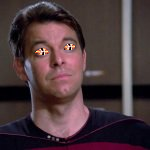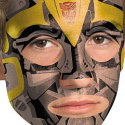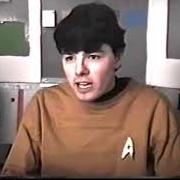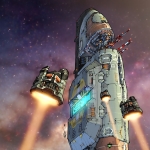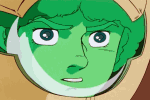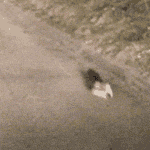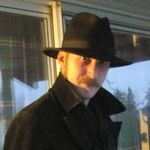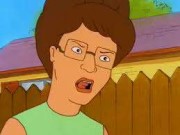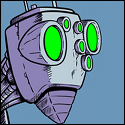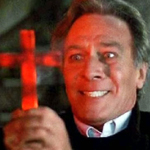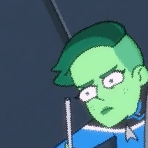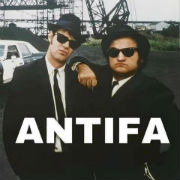|
Begun, the clone war had.
|
|
|
|

|
| # ? Apr 27, 2024 03:17 |
|
Good relations with the Wookiees he has.
|
|
|
|
Farmer Crack-rear end posted:jesus christ, is there literally anything before vader throwing him down the shaft that didn't go according to plan for him Good ol' Sheev is the king of "poo poo, that didn't work... But I can still play it this way" while keeping eyes on the prize. Close hatch, open viewport etc. etc.
|
|
|
|
Revenge of the Sith novelization posted:It was said that whenever the Force closes a hatch, it opens a viewport... and every viewport that had so much as cracked in this past thirteen standard years had found a Dark Lord of the Sith already at the rim, peering in , calculating how best to slip through. 
|
|
|
|
MikeJF posted:My thinking is that Yoda knew that Sidious would both manipulate the hell out of Luke and also be incredibly ridiculously force powerful (and yeah that he'd almost certainly do the former without even needing the latter), so during ESB he was of the belief the only way Luke would ever have a chance of survival in any way was both being extremely mentally fortified by Yoda's training and years of maturing and also knowing literally everything and every Jedi technique and defence that Yoda could teach him, and then having a plan between him and Ben we never really learn of. The more important one was the mental state and being able to resist the Emperor's manipulations, but ultimately he'd need the latter too and be fully trained as a Jedi. But their time was cut short by Luke loving off and Yoda's failing health. Yoda knew that if Luke confronted Vader he would learn that Vader was his father, it's that simple. He didn't know if Luke was capable of dealing with that revelation. That was the only reason he was worried about Luke facing Vader. Once Luke faced that and decided to die rather than join Vader, Yoda knew that Luke was ready. Yoda's plan was probably to tell Luke about Vader himself when he thought Luke was emotionally ready to handle it. Once Luke comes back, he doesn't have anything else to learn. He already showed he was as resistant to the Dark Side as anyone could be.
|
|
|
|
In the what-if land of early script drafts, Luke without Vader as his father seems to become Jedi Knight material pretty quickly. In Leigh Brackett's rough draft, the illusory confrontation with Vader on Dagobah features Vader trying to lure Luke to the dark side by promising the power to make Leia love him and end the war (presented in order of importance). But without the family connection, Luke stands by his oath to the Jedi and is knighted by Yoda (as well as the ghosts of Anakin and Obi-Wan) before he leaves to rescue Han & Leia with Yoda's approval.
|
|
|
|
Sithos
|
|
|
|
*Darth Sithos
|
|
|
|
GOOD...HA HA HA... GOOD!
|
|
|
|
Imagine being a sicko for good.
|
|
|
|
Force Healing wasn't as fun as Force Destruction, though neither of them felt adequate for an end-game thing. I can't remember if you could use either in multiplayer.
|
|
|
|
Schwarzwald posted:GOOD...HA HA
|
|
|
|
Schwarzwald posted:GOOD...HA HA Today's No-Good Lazy Jedi: "b-but he's an unarmed prisoner! i shouldn't kill him!" Sophisticated Lord of the Sith: "Kill him! Kill him now!" Korner Kelly: "Brevity is the soul of Dewit."
|
|
|
Lawman 0 posted:Imagine being a sicko for good. Pretty much described the 'Light-side' paths for the Sith classes in SWTOR.
|
|
|
|
|
which came first, light or dark?
|
|
|
|
In the real world, the Dark Side came first - the Light Side was invented by the WEG tabletop RPG in the late 80's. Lucas always called it "the good side" because it was the objectively positive and benevolent part of the Force. Then later sources started to make them equal-but-opposite, and reframed it so things like a flood or a forest fire were "Dark Side" events because they caused destruction, despite there being no intent behind the events that would give them any sort of morality. Calling it the "Light Side" rather than the "Good Side" lessens the idea that one is inherently more "correct" than the other. When Episode I came out, people thought that balancing the Force might mean the 2 Jedi / 2 Sith status quo that's in the OT, but Lucas always considered the Dark Side to be the imbalance. So in-universe, the "Light Side" would have come first since it's the natural, uncorrupted state of the Force. Then you get to stuff like The Clone Wars, which seemed to imply in the Mortis episodes that the Force in its natural state doesn't really do anything (represented by the Father), but then is shaped by the good or evil actions of people (the Daughter and the Son). So in that case, the Light and Dark would have built up at the same time as living beings in the galaxy evolved and began to make moral choices. I don't know if the Disney canon's come down one way or the other. The Last Jedi seemed to follow the equal-but-opposite nature interpretation of the Force from the TTRPG, and Trevorrow's Episode IX would have reintroduced Mortis, but there likely won't be anything super definitive unless the Ahsoka series delves into it or James Mangold's The First Jedi movie actually gets made.
|
|
|
|
If I were George Lucas I would spend my time on Twitter posting increasingly out-there statements about the nature of The Force.
|
|
|
|
The force is a horse of course, of course
|
|
|
|
Speaking of what is and is not a (white/light) horse, I think it's worth considering how pop-Buddhism has changed in American culture and how that relates to our relationship to the Force. Lucas basically has Suzuki as his window. Suzuki's approach engaged the West but it was very firmly rooted in China and Japan. That's really different from most contemporary American Buddhisms where they are proselyting and therefore syncretic religions. Part of that syncreticism involves stripping contemporary American Buddhism of the other two (three) jewels of Confucianism, Daoism and either Chinese folk religion (more on that in a second) or Shinto in the case of Zen-by-way-of-Japan. There are further Hegelian sunderings of modernity, where Daoism and Confucianism are split from folk religion -- plenty of Americans have a very Protestant approach to Daoism that begins with the Daodejing and ends with the Zhuangzi. Start talking about the Celestial Bureaucracy, Han synthesis (any loving opinion on it), or really anything that happened since the Axial Age and you get blank stares. What I'm trying to say is that Lucas had a very differently encumbered view of Buddhism that he used to build the concept of the Force. He was also a huge Kirkegaardian via Campbell. This is important because here is a post by a nerd (Chris Panza, a professor of philosophy and sinology at a prestigious university) about the Confucian conception of the "Way" where you can basically replace "Way" or "Dao" with "Force" as understood through a Kirkegaardian lens: quote:Peony at her blog asks a very good question: just how similar would Confucius be to Kierkegaard? More pointedly – is Confucius just an ancient version of Judge William from Either/Or, imploring the reader to get off his or her butt and finally make a choice or a leap into the authentic life of being socially embedded within roles? I find this to be a fascinating question and I’d like to think a bit more about it here. I’ll do it by situating the question within the context of Herbert Fingarette’s writing. Fingarette, I believe, upon hearing this question would take his shoe off and slam the table with it like Khrushchev while repeatedly yelling “NO! NO! NO!” Let’s walk this through below the fold and see how it shakes out. In that vein, the Force works where you, as a Jedi, are either on the Force or off the Force. You are either an instrument of the galactic consciousness or you aren't. This relates to Lucas's idea of balance. Balance isn't the same number of people on and off the path. Balance is everyone on the same, singular path. But what about fail states? Well, then we can look to another Confucian Kirkegaardian philosopher Tu Weiming. His whole thing is to contextualize the Great Learning through a Kirkegaardian lens creating selfhood as creative transformation. He takes Yangming's interpretation if the Great Learning where the self is essentially a series of concentric circles starting with what essentially is the Ego expanding to the entire universe in a kind of pan-psychism. From this point of view, the Sith get stuck at a particular place along the continuum. Atomized Self (which is actually an epiphenomenon) -> family -> nation -> species -> world -> universe (actual reality). Palpatine reifies the self that doesn't exist. Vader fails to expand beyond family. Dooku fails to expand beyond nation. The Empire (pre-Zahn, which is why he sucks as an author and fundamentally doesn't get Star Wars) fails to expand beyond species. There is one force and you are on it or off it. Do or do not, there is no try.
|
|
|
|
rude to be reminded here, in the sci-fi wi-fi, that I never finished either/or
|
|
|
|
so it's neither, then
|
|
|
|
Ciao Wren posted:Speaking of what is and is not a (white/light) horse, I think it's worth considering how pop-Buddhism has changed in American culture and how that relates to our relationship to the Force. Lucas basically has Suzuki as his window. Suzuki's approach engaged the West but it was very firmly rooted in China and Japan. That's really different from most contemporary American Buddhisms where they are proselyting and therefore syncretic religions. Part of that syncreticism involves stripping contemporary American Buddhism of the other two (three) jewels of Confucianism, Daoism and either Chinese folk religion (more on that in a second) or Shinto in the case of Zen-by-way-of-Japan. There are further Hegelian sunderings of modernity, where Daoism and Confucianism are split from folk religion -- plenty of Americans have a very Protestant approach to Daoism that begins with the Daodejing and ends with the Zhuangzi. Start talking about the Celestial Bureaucracy, Han synthesis (any loving opinion on it), or really anything that happened since the Axial Age and you get blank stares. I like it when the lightsabers go vrummmummmmm FVISH!
|
|
|
|
Impossibly Perfect Sphere posted:I like it when the lightsabers go vrummmummmmm FVISH!
|
|
|
|
So... Anybody ever sit down and read the Wookieepedia article on penises?
|
|
|
|
No but i'm a lot more likely to read that then whatever the gently caress this other post was.
|
|
|
|
To crib from Master Esai, "I know nothing of Jedi past, present or future but I know reading wookiepedia articles on penises is not of the Force."
|
|
|
|
Chewbacca running around the Millennium Falcon with no trousers on. how often do you think Han got an eyeful?
|
|
|
|
Given how cramped the ship is, I have to imagine nudity would be extremely mundane. It's Tuesday and Chewie is cranking it in the copilot seat.
|
|
|
|
Cerv posted:Chewbacca running around the Millennium Falcon with no trousers on. how often do you think Han got an eyeful? It's probably sheathed, like a dog dick. No I'm not looking it up.
|
|
|
|
Chewie's nudity actually was a real concern that the studio executiveshad, and they asked if he could put some pants on.
|
|
|
|
At least they eventually settled for the giant merkin
|
|
|
|
|
I could see Chewie in a pair of cutoffs. I think he could pull it off.
|
|
|
|
Impossibly Perfect Sphere posted:I could see Chewie in a pair of cutoffs. I think he could pull it off.  That's as good as I could get, I couldn't get the jeans any shorter.
|
|
|
|
That image is now canon.
|
|
|
|
Finger Prince posted:
lol 
|
|
|
|
In the last few years of the Old EU, there was a "Dawn of the Jedi" comic series detailing the origins of the Jedi order, and it really went hard on trying to establish grey jedi as the one true way of the force. The main distinguishing characteristic of the series was that it sucked. The premise is that force sensitives were gathered from across the galaxy in enigmatic d8 spaceships and dumped out onto the planet Tython where the ways of the Jedi would be created. Tython was a planet unusually strong in the force, and also its two moons were Bogan and Ashlah, which were somehow connected to the light and dark side, and whenever somebody's somehow too dark or light, they get sent to one of the moons to learn to balance it out. Of course, that's only the setup, and the main story of the series is about the threat of the Rakatan Infinite Empire as previously established in the KOTOR series, and it turns out that Tython was established as a refuge from the Rakatan by other ancient alien empires the Gree and Kwa. Also the Rakata rely on force-sensitive human slaves to find new worlds to conquer (like Rachel Summers in X-Men), but the slave that finds Tython ends up finding love and betraying his masters, all that junk. I think the order falls apart by the end because the evil moon guys were too evil? And although technically the whole thing was thrown out with the old EU, in Rebels there's a grey force guy who makes reference to Ashlah and Bogan, which may imply something. A lot of things kinda got stealth-re-canonized in that way.
|
|
|
|
Dawn of the Jedi was kind of a weird one. I get the late-stage EU wanting to flesh out that period of history, but handing it to Ostrander & Duursema seemed like an odd choice. When I think of "the origins of an order of philospher monks who only fight in self defense and eschew mortal pleasures in their quest for spiritual enlightenment", I don't exactly imagine a series created by people who only seem to enjoy writing about one Type of Guy:   But the Ashla and Bogan were just the names for the good and evil parts of the Force in Lucas' second draft script of A New Hope, so it's likely that the Rebels reference was to that before being a reference to Dawn of the Jedi in particular. The names also got nods in the prequels, with Ashla being the name of a Togruta youngling in Attack of the Clones, who was briefly considered to become Anakin's Padawan but the age discrepancy meant they had to create a different character. Ahsoka would eventually use Ashla as an alias during the purge though, so things kind of went full circle. Boga, Obi-Wan's lizard mount from Episode 3, was a re-use of the Bogan Force from the old scripts.
|
|
|
|
SlothfulCobra posted:
Yeah, it's real loving bad.
|
|
|
|
Having the dark side of the force being called Bogan is loving hilarious.
|
|
|
|

|
| # ? Apr 27, 2024 03:17 |
|
Darth Bruce, rolling up on the Jedi in his TIE Interceptor Ute, crushing a tinnie of 4x, dropping C-bombs like it's the only word he knows.
|
|
|








